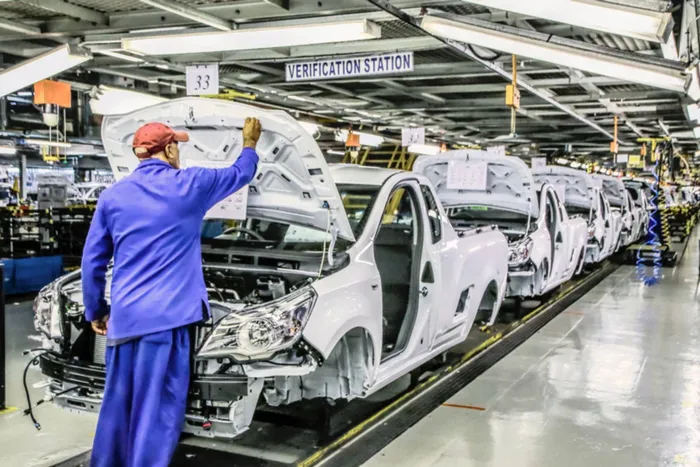South Africa’s automotive industry defies global economic challenges in April
ECONOMY

Even though export sales decreased by 2 266 units, or 6.6%, to 31 822 units in April compared to the 34 088 vehicles a year ago, vehicle exports for the year to date were still 6.3% ahead of the same period last year.
Image: Supplied
The automotive industry in South Africa demonstrated resilience in April and increased new vehicle sales for the month by 11.9% in spite of the global economic landscape continuing to shift under escalating uncertainty.
The Automotive Business Council (Naamsa) on Friday said the aggregate domestic new vehicle sales reached 42 401 units, up from the previous year's figure of 37 899 units.
This surge reflected the industry’s structural depth, export capabilities, and ability to pivot within a shifting global economy even as external headwinds strengthened.
Even though export sales decreased by 2 266 units, or 6.6%, to 31 822 units in April compared to the 34 088 vehicles a year ago, vehicle exports for the year to date were still 6.3% ahead of the same period last year.
Naamsa CEO, Mikel Mabasa, said the automotive sector found itself once again at the coalface of global economic shifts.
“While the new US tariff measures are concerning, the resilience and competitiveness of the South African automotive exports remain steadfast. Our industry has navigated difficult global tides before, and we will compellingly do so again,” Mabasa said.
“Despite fewer selling days in April 2025 compared to April 2024, due to the configuration of public holidays, as well as formidable global headwinds, the new vehicle sales performance encouragingly continued the upward momentum of the first quarter into the second quarter 2025.
“Inflation fell to 2.7% year-on-year in March 2025, marking the lowest level since June 2020, aided by a notable easing in fuel and education costs. The latest headline inflation rate should encourage the Reserve Bank to cut interest rates further, even though inflation is expected to trend higher in the second half of 2025 due to global developments.”
Vehicle export sales, despite decreasing during the month, demonstrated underlying resilience. One major OEM halted production for more than half of the month due to facility upgrading in preparation for a new model investment, which negatively impacted on the industry’s export performance.
Brandon Cohen, chairperson of the National Automobile Dealers’ Association (NADA), said the automotive sector had maintained its growth momentum in April.
“Despite global economic headwinds and a relatively short trading month, the local auto sector, once again, delivered solid numbers, a pleasant surprise to even the most avid industry observers,” Cohen said.
“With affordability still a major concern for the average consumer and the Reserve Bank likely to be cautious about interest rate decisions in the face of global economic pressure, it is with mild optimism that we look forward to the May sales numbers.”
However, Naamsa said there was a concern that domestic vehicle exports may moderate as the full impact of the US Section 232 tariffs filters through.
The announcement of sweeping tariff hikes on 3 April by US President Trump, notably under the revived Section 232 trade measures, marked a critical escalation.
Higher tariffs on imports from 57 countries, ranging from 11% to 50%, were scheduled to take effect on April 9 but were almost immediately suspended for 90 days for all countries, except China.
While much attention focused on the 10% universal tariff imposed on 5 April and the 30% reciprocal tariff specifically targeting South Africa, Naamsa said it was the application of Section 232 tariffs on automotive exports that presented perhaps the most profound structural threat.
Originally designed to protect US national security interests, the Section 232 tariffs impose punitive duties on automotive products, including vehicles and parts - sectors where South Africa has established world-class export capabilities over decades.
With South Africa’s vehicle exports to the US previously enjoying tariff-free access under African Growth and Opportunity Act, the sudden imposition of these duties significantly alters market access conditions.
Naamsa said South Africa’s automotive exports to the US will now face material cost disadvantages, raising concerns aboutpricing competitiveness and profitability for multinational OEMs operating domestically.
Mabasa said global economic growth was expected to be significantly and immediately curtailed as a result of the tariffs, casuing competitive distortions and market dislocations elsewhere.
He said the tariff uncertainty was creating a very difficult environment for businesses and could hinder competitive strategies, delay capital investments, distort long-term planning and increase short-term operational volatility.
“The future of South Africa’sautomotive industry will be shaped by how boldly we respond to global change,” Mabasa said.
“As we navigate rising uncertainties, we remain committed to leading innovation, strengthening competitiveness, and expanding South Africa’s role as a critical manufacturing hub in the African continent andglobal economy.”
BUSINESS REPORT